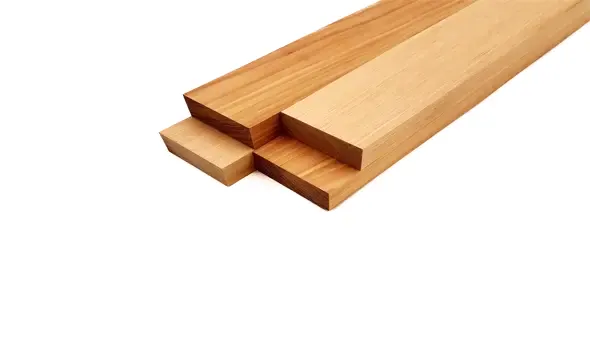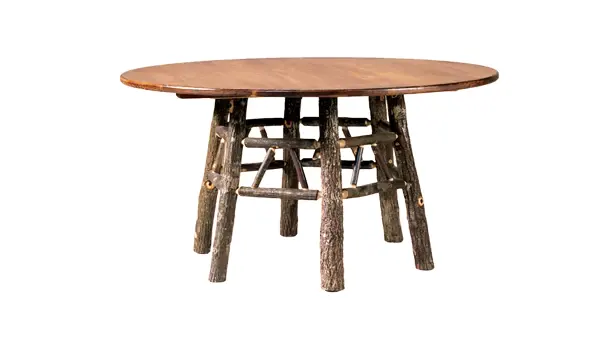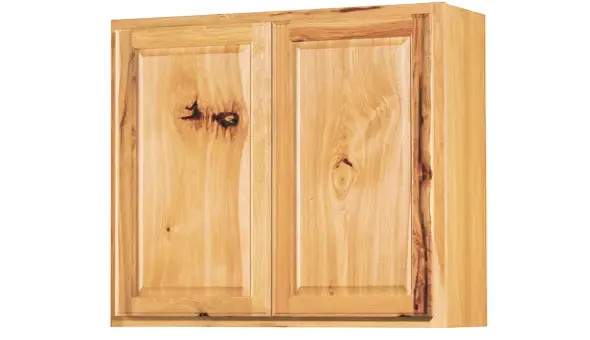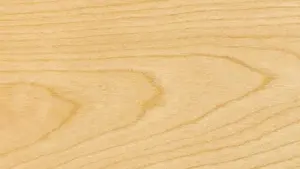Natural Hickory Lumber
- July 26, 2023
- 1 comment
Natural Hickory lumber is highly sought after in the world of construction and furniture-making due to its remarkable strength, durability, and unique visual appeal. Its versatility makes it a top choice for a wide range of applications, from residential interiors to commercial spaces. The heartwood of hickory displays a delightful spectrum of light to medium brown shades, while the sapwood is a contrasting pale white, creating a visually striking pattern that sets hickory apart from other hardwoods, making it an excellent choice for projects where aesthetics matter.

Apart from its captivating appearance, hickory lumber boasts impressive mechanical properties. Its density and hardness contribute to its remarkable strength, allowing it to withstand significant wear and resist denting and marring. This durability ensures that hickory-made furniture and structures remain robust and maintain their original beauty for years to come, even under heavy use.
The fine, straight grain and moderate natural luster of hickory make it suitable for various woodworking techniques and finishes, adding to its versatility. While challenging to work with hand tools due to its density, hickory responds well to machining, making it an excellent candidate for custom-made pieces and mass production alike. In the construction industry, hickory finds application in flooring due to its resilience against foot traffic and ability to add warmth and character to any space. Additionally, its strength and shock resistance make it an ideal choice for tool handles, providing sturdy support for heavy-duty tools. In the furniture industry, hickory is a favored choice for creating enduring pieces, such as chairs, tables, and cabinets, which can withstand the test of time and become treasured family heirlooms.
| Common Name(s) | Hickory |
|---|---|
| Scientific Name | Carya spp. (Various species) |
| Distribution | Eastern and Central United States |
| Tree Size | 70-100 feet tall, 2-3 feet diameter |
| Avg. Dried Weight | 41-49 lbs/ft3 (656-784 kg/m3) |
| Specific Gravity | 0.66-0.78 |
| Janka Hardness | 1,820-2,300 lbf (8,100-10,200 N) |
| Modulus of Rupture | 15,500-20,200 lbf/in2 (106.9-139.3 MPa) |
| Elastic Modulus | 1,700,000-2,090,000 lbf/in2 (11.72-14.41 GPa) |
| Crushing Strength | 7,300-9,700 lbf/in2 (50.3-66.9 MPa) |
| Shrinkage | Radial: 4.2%, Tangential: 7.1%, Volumetric: 11.5%, T/R Ratio: 1.7 |
About Hickory Lumber
Color/Appearance:
The captivating coloration of hickory lumber contributes to its popularity in furniture making and flooring. The heartwood of hickory ranges from light to medium brown, showcasing beautiful variations within this color spectrum. This natural variation gives each piece of hickory furniture a unique and distinctive appearance, adding character and warmth to any space. The contrast with the pale white sapwood further enhances the visual appeal, making hickory an eye-catching choice for both rustic and contemporary designs.


Grain/Texture:
Hickory’s straight, fine grain pattern adds to its overall elegance and contributes to its timeless beauty. The medium to coarse texture creates depth and interest in the wood’s surface, making it visually appealing when finished or polished. The wood’s moderate natural luster further enhances its aesthetics, allowing it to display a subtle sheen that highlights the grain pattern and brings out its inherent beauty.
Rot Resistance:
Hickory lumber’s resistance to decay is rated as perishable to slightly durable, indicating that it is susceptible to fungal attacks when exposed to moisture for extended periods. To ensure its long-term durability, hickory should be protected from direct contact with the ground and properly sealed or finished for outdoor applications. However, when maintained and used indoors or in controlled environments, hickory remains an enduring and reliable material.
Workability:
Hickory’s dense nature and exceptional strength may pose challenges when working with hand tools, requiring sharper blades and more effort during shaping and cutting. However, its robustness and ability to hold fasteners make it an excellent choice for structural elements and items subjected to heavy use. With the right tools and techniques, hickory can be crafted into beautiful and durable pieces. It responds well to gluing, staining, and finishing, allowing woodworkers to achieve various looks and styles.


Odor:
Hickory does not have any distinct odor, making it an ideal option for projects where a neutral scent is preferred.
Allergies/Toxicity:
Although severe reactions to hickory are uncommon, some individuals may experience respiratory issues or skin irritation when working with the wood. As with any woodworking material, using appropriate safety measures, such as wearing a dust mask and gloves, is essential to prevent potential irritations.
Pricing/Availability:
Hickory lumber is reasonably priced and widely available in the United States, making it a cost-effective and accessible option for woodworking projects of various scales.
Sustainability:
Hickory’s status as a non-listed species in the CITES Appendices and the IUCN Red List reflects its general abundance and sustainable availability. Responsible forestry practices and sourcing from reputable suppliers further contribute to the wood’s eco-friendly appeal.

Common Uses:
Hickory’s combination of excellent strength and shock resistance makes it highly valued for crafting tool handles, such as hammers, axes, and mallets. In the realm of furniture making, hickory is a popular choice for creating enduring pieces, including chairs, tables, cabinets, and other specialty items. Its use in flooring provides a durable and visually appealing option for high-traffic areas. The wood’s versatility also extends to sporting goods like baseball bats and lacrosse sticks, where its robustness and performance characteristics shine. With its wide range of applications, hickory remains a favored and cherished hardwood in various industries.
FAQs
- Is hickory a hardwood or softwood?
Hickory is a hardwood known for its density and durability. It falls under the category of deciduous trees. - Is hickory suitable for outdoor use?
Hickory is not recommended for prolonged outdoor exposure due to its moderate decay resistance. It’s better suited for indoor applications. - Does hickory have a distinct smell when working with it?
No, hickory does not have a strong or distinctive odor when being worked. - Is hickory lumber eco-friendly?
Hickory is considered a sustainable wood choice as it is widely available and not endangered. However, always check for certifications like FSC when purchasing to ensure responsible sourcing. - What makes hickory lumber desirable for tool handles?
Hickory’s exceptional strength, shock resistance, and ability to withstand heavy use make it an ideal wood for tool handles, ensuring they can endure tough conditions.

Edward Smith
Forestry AuthorWoodworking is about more than crafting; it's a harmonious connection with nature, mastering tools, and preserving our environment. I'm here to share my knowledge and experiences with you, forging a future where we can embrace wood's beauty and utility while safeguarding our forests' health and diversity.













I am looking for some tech information on the difference in the weight sap wood and the heart wood of hickory Thank You for your time
Jerry Brunkhart
December 22, 2023 2:49 am